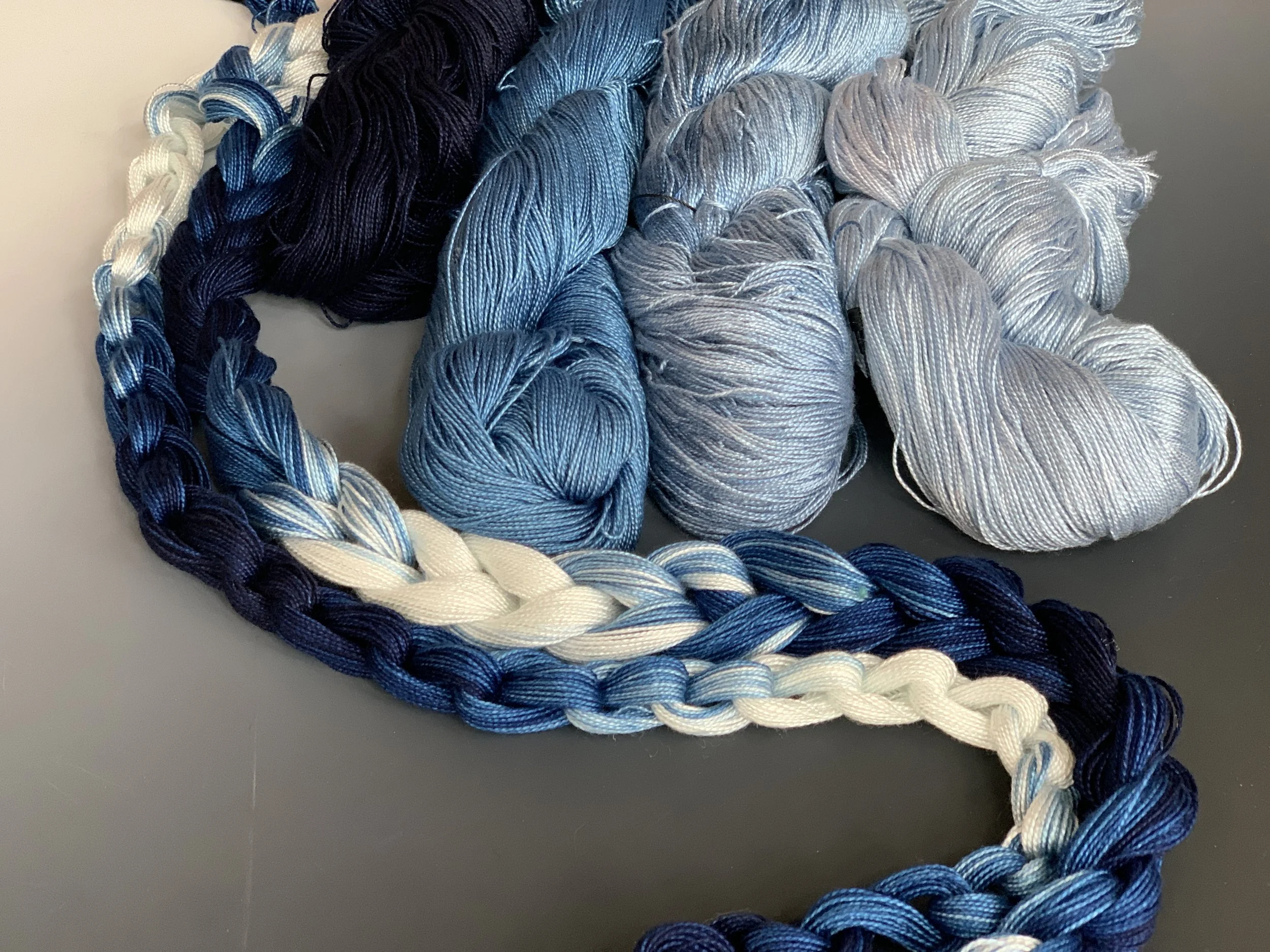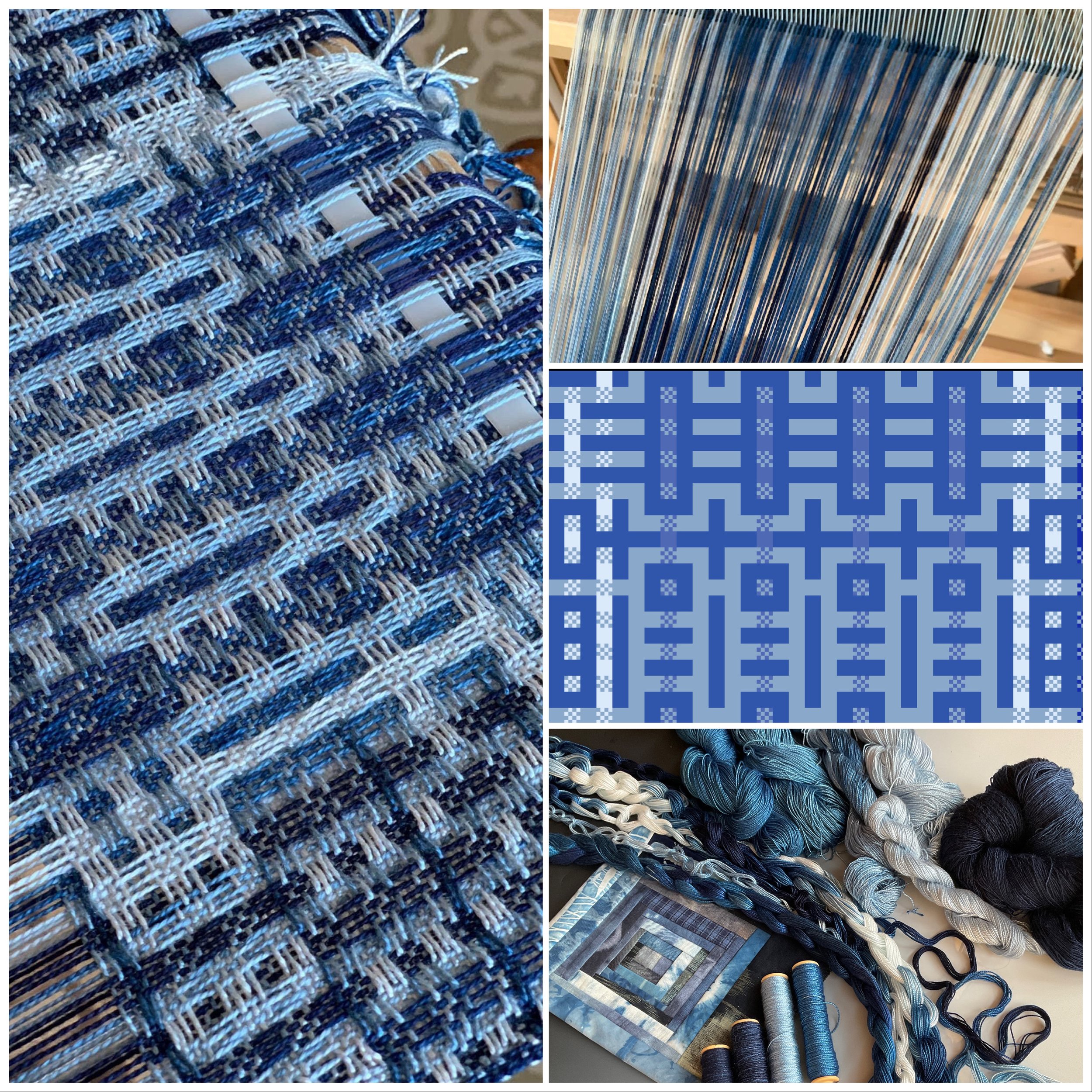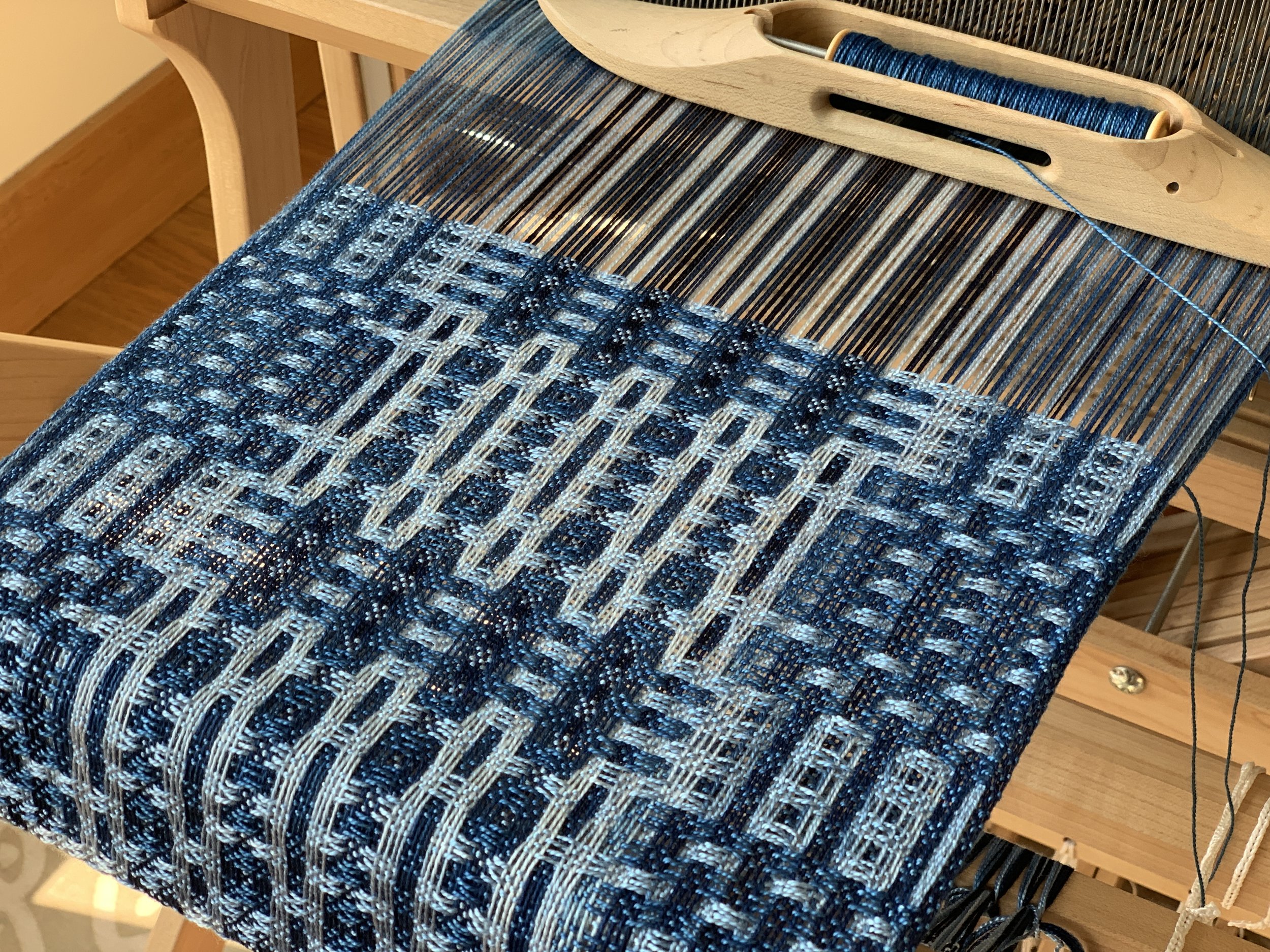Color Pooling for a Purpose
Those beautiful dyed skeins! What can be done with them if you want to plan something in addition to a random weft weaving? Sometimes the colors in a hand-dyed skein can be just what you need to plan a project with other solid or hand-dyed yarns. I often will color pool a small amount for a color accent in a warp rather than color pooling an entire skein of 500 yards. Color pooling can be time consuming, but really worth the effort!
There are many blogs and resources about color pooling. One of the best blogs I have seen was published by Syne Mitchell in 2012 I believe. Daryl Lancaster also has an example in her Chaos Draft that you may purchase from her website. As weavers, some of our warping tools might make it helpful or more challenging. I have seen weavers use warping mills and some use their warping boards. I wind my warp in a continuous loop or circle and using the same peg to start with is critical. I do not turn on an ending peg like I do as I wind my other warps! Because I often weave or combine them with other warps, I have found that the closest yardage I can wind with many of my dyed skeins of 63” circumference is 4.38 yards. This means if I’m using it with warps of 4.0 or 4.5 yards, there will be some yarn waste. Therefore I have more recently decided to color-pool for a purpose to use in intended portions of a draft!
Step 1: Find the circumference of a painted skein. Example 63”
Step 2: Determine the length of your project or the length of an overall warp that is closest to the length of the yarns you are using them with. Example: 4.5 yards x 36” is 162”.
Step 3: It is usually helpful to make a guide string the length of circumference 63” x 2.5 repeats is 157.5” or 4.38 yards. This may be a little different than some might recommend, but I strive for as little yarn waste as possible. I measure out my guide string in a continuous loop or circle using my warping board and a plate rack!
Step 5: Use the same starting peg and wind your loop and end on the same peg. My cross is just after my starting peg. The color pooling will naturally feather as I wind. If the pooling starts to get way off, I will wrap a few times around the starting peg. This will be yarn waste, but usually not too much as I prefer an ikat-like shifted look.
In the two warps above, I’ve color pooled the same skein of indigo. I calculated the number of ends needed in my draft having the largest areas of plain weave as 80. This is my innermost warp. I then cut 6” of one end before I started winding the outermost warp. This will naturally shift the warp colors to create a different alignment of the dark and light colors. I’ve purposely planned for the same block of threading to have 12 ends of this warp.
I’ve got a plan and a draft. I don’t tend to use weaving software for color purposes as it can never come close to the nature of hand painted warps or skeins. I’ll use the other indigo dyed skeins as the outline yarns and adjust accordingly on the loom. I can wait to weave it, but it may be a while before I get to it. This will be like an ikat shifted Deflected Doubleweave when I am done with it! And how about experimenting with resists and ice dyeing?
So I’ve started weaving using my newest deflected doubleweave draft and I’ve partnered it with my ice dyed combination of indigo, midnight, and a little sky blue. I’m very pleased with how the indigo palette has turned out. In addition to ice dying a few warps for this project. I used the residual dye bath to create a lighter value of indigos. It has some small areas of white as I clipped some of the warp to my tub to create a gradient of colors using capillary action or macrocapillary. A great way to soak up leftover dye is to wind .5 ounce mini skeins as well. Here’s my shades of indigo sample at first glance. I’ll also have some leftovers for another project - perhaps I’ll attempt my original plan!






